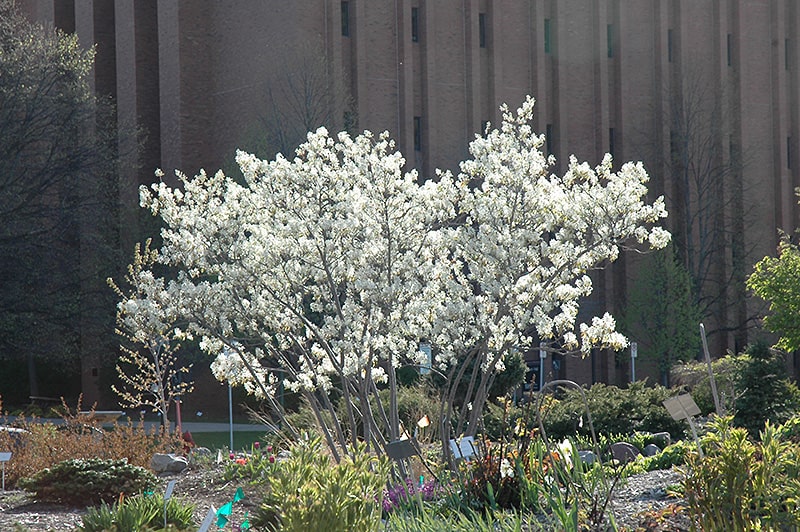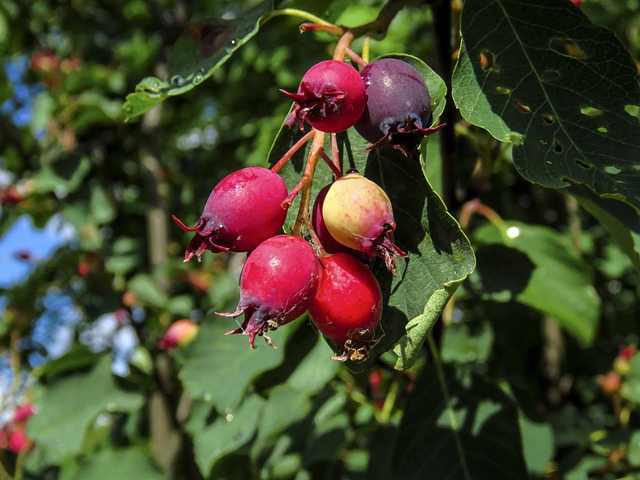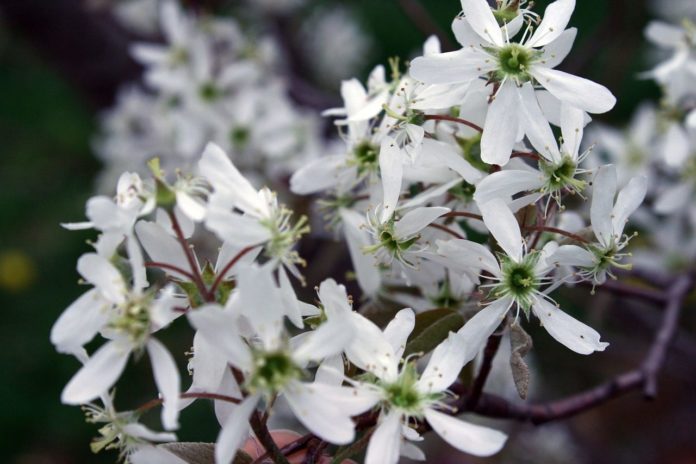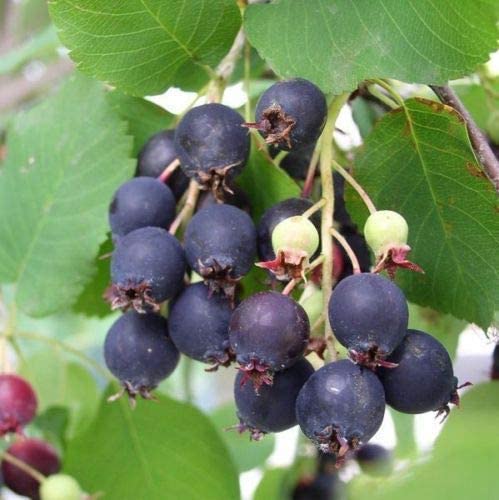

This guide is meant to teach you how to propagate saskatoon serviceberry (Amelanchier alnifolia) and hopefully, make it easier for you to sell them at your own nursery.

Hardiness Zone: 2-7

Soil Type: Well-drained loam, sand

Water: Average

Exposure: Full to Partial Sun
Saskatoon serviceberry (Amelanchier alnifolia) is a berry-producing zone 2 perennial shrub native to the Canadian prairies.
In early spring, the white flower clusters emerge before the leaves.
Serviceberry leaves are oval to orbiculate-shaped with serrulate margins. They grow on the stems in alternate arrangements.
In zone 2, saskatoon serviceberries are ripe to pick by July. While in warmer regions, as early as May and June!
In the wild, saskatoons grow near moist stream banks, dry hillsides, and open woods.
Planting saskatoon serviceberry bushes on your property can attract all sorts of animals, from insects like butterflies, to birds, and even large boreal forest mammals like moose.
Best Ways to Propagate Saskatoon Serviceberry (Amelanchier alnifolia)
By Division
Saskatoon serviceberry is a suckering plant, which makes it easier to propagate. In a sense, it does a lot of the work for you.
Saskatoon serviceberry plants naturally send out rhizomes from which new plants grow from. With these types of plants, the best thing to do to propagate is to dig around the sucker(new growth) and separate it from the main root.

Afterward, if there are any left, trim the remaining rhizome (root from the parent plant) from the sucker. Also try to remove any long, leafy shoots, this limits drying and promotes bushy growth.
Finally, place the sucker in a sandy propagation bed, and keep the moisture steady with automatic sprinklers. Cover with a shade cloth for partial sun exposure, and give them time to create more roots.
Suckers are best taken from a plant during springtime when the plant is actively growing.
By Root Cuttings
Root cuttings are also a possible way of propagating saskatoon serviceberry. It should always be done when the plant is dormant, this can be autumn or very early spring.

When you take root cuttings, you are digging around a parent plant and looking for a healthy piece of root to transplant.
You have to be careful not to take a major root from the parent plant because it might end up killing it! Although it does have to be thick enough and disease-free.
- For a thin root cutting: Once you have it dug out, clip it at an angle and when you transplant it into a sandy bed, lay it down horizontally.
- For a thick root cutting: Same thing, cut it at an angle but for this one plant it vertically.
A good size for these cutting is from 2-3 inches (5-5.75cm). Also, make sure to transplant them the right way up because new shoots will sprout from the cut ends.
Keep your propagation beds moist with automatic sprinklers and ensure they have partial to full shade.
By Seed
Note: Serviceberry seeds need to go through a cold stratification period to germinate.
Here’s how:
- Place your seeds in a ziplock with moist sand, tag the bag with the date and name, then place them in your freezer for 60 days.
- Take them out and place them into room temperature water for 12 hours.
- Put them back into the ziplock and then place them into your refrigerator for another 60-90 days.
After this process, they will be ready for sowing.
Alternatively, you can sow your seeds outside in the ground or in pots and let them go through winter outdoors. That way they are stratified naturally.
Sowing
The best growing medium for your serviceberry seeds is peat moss. Just sprinkle the seeds evenly on top and cover them with a thin layer of soil. Cover them with newspaper and keep the moisture levels high but not wet or soggy.
Serviceberry seeds should be fully germinated within a month! Given you had them cold-stratified first.
When they’ve grown enough for transplanting, do it carefully as the roots aren’t very solid at this stage.
For this stage, the best growing medium is peat moss mixed with sand and perlite.
You can order serviceberry seeds online below:
The link above is an Amazon affiliates link. As an Amazon Associate, eco-friendly income earns from qualifying purchases. Your support will help us continue to provide quality content on plant propagation and identification.
How to Ready Saskatoon Serviceberry for Sale
After your rooter suckers or cuttings have made enough foliage, transplant them in individual pots and place them in a well-lit spot for exponential growth.
Saskatoon serviceberry grows relatively slow, you have to be patient with them but they are an awesome berry-producing plant after all, well worth it!
Saskatoon serviceberry trees can grow from 6 feet to 30 feet!
Are you planning to sell them as trees or shrubs? Prune the tip of the main stem to force the plant to grow more into a shrub shape, or prune a few secondary branches to make it grow as a tree.


